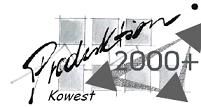


The market trends described on page Agent-Based Manufacturing have motivated the Mercedes-Benz engine plant in Stuttgart-Untertürkheim to develop a new kind of production system for manufacturing cylinder heads. To this end, Mercedes-Benz (now Daimler) formed, under the leadership of the Mercedes-Benz manager Dr. Christoph Siegel, an industrial consortium consisting of machine suppliers, transportation system suppliers, control suppliers, and universities. The overall goal of this consortium, which was named Production 2000+ (also P2000+ for short), was to develop a new production system for flexible and robust manufacturing. To achieve this goal, the consortium defined three main objectives:
To achieve the third objective, the consortium developed a concept for a flexible transportation system and an agent-based system for controlling the flexible transportation system. In particular, the agent-based system was designed to fulfill the requirements of a high-volume manufacturing system, which were:
The fulfillment of the above requirements is to a large extent the task of the machines in a production system (in particular the aspects of high-volume and quality). But the transportation system, and thus the agents controlling the transportation system, must ensure that the machines are supplied with the right workpieces at the right time. This is particularly important for achieving the robust performance (in the face of disturbances) and the flexibility of the production system.
The project started in late 1996 and the first prototype was installed in 1999 at the Mercedes-Benz plant in Untertürkheim. This prototype was successfully tested in a performance test and then deployed at the plant for day-to-day operation. Despite its success during the performance test and during the day-to-day operation, no second production system based on these concepts has been deployed until today. What seems to be a contradiction at first, is partly due to the changing requirements of the manufacturing process, but also partly due to the agent-based approach, which is discussed in more detail here.
On the next pages, you can find the following information about the production 2000+ system:
The P2000+ production system
The layout of the production process and the flexible transportation system.
The control architecture
The architecture of the agent-based system, i.e., the agent types and their responsibilities.
The control algorithm (see allocation, buffering, deadlock avoidance, directing the flow)
The algorithms implemented by the agents in order to control the workpiece flow.
The performance tests
The concepts of P2000+ went through three validation steps: simulation, feasibility test and performance test on the
shop floor.
The deployment
The deployment of the agent-based system in day-to-day operation.
Lessons learned
The lessons learned from deploying an industrial agent-based systems.